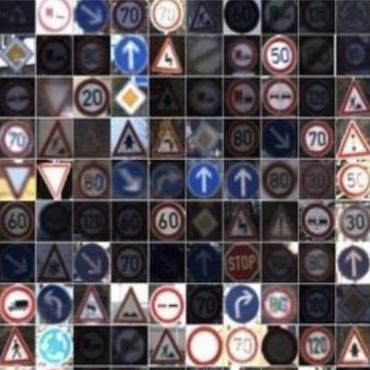Search Results for author: Semeen Rehman
Found 10 papers, 3 papers with code
dRG-MEC: Decentralized Reinforced Green Offloading for MEC-enabled Cloud Network
no code implementations • 10 Jan 2024 • Asad Aftab, Semeen Rehman
Multi-access-Mobile Edge Computing (MEC) is a promising solution for computationally demanding rigorous applications, that can meet 6G network service requirements.
BioNetExplorer: Architecture-Space Exploration of Bio-Signal Processing Deep Neural Networks for Wearables
no code implementations • 7 Sep 2021 • Bharath Srinivas Prabakaran, Asima Akhtar, Semeen Rehman, Osman Hasan, Muhammad Shafique
We are successful in identifying Pareto-optimal designs, which can reduce the storage overhead of the DNN by ~30MB for a quality loss of less than 0. 5%.
MLComp: A Methodology for Machine Learning-based Performance Estimation and Adaptive Selection of Pareto-Optimal Compiler Optimization Sequences
no code implementations • 9 Dec 2020 • Alessio Colucci, Dávid Juhász, Martin Mosbeck, Alberto Marchisio, Semeen Rehman, Manfred Kreutzer, Guenther Nadbath, Axel Jantsch, Muhammad Shafique
Training of the policy is supported by Machine Learning-based analytical models for quick performance estimation, thereby drastically reducing the time spent for dynamic profiling.
RED-Attack: Resource Efficient Decision based Attack for Machine Learning
1 code implementation • 29 Jan 2019 • Faiq Khalid, Hassan Ali, Muhammad Abdullah Hanif, Semeen Rehman, Rehan Ahmed, Muhammad Shafique
To address this limitation, decision-based attacks have been proposed which can estimate the model but they require several thousand queries to generate a single untargeted attack image.
Security for Machine Learning-based Systems: Attacks and Challenges during Training and Inference
no code implementations • 5 Nov 2018 • Faiq Khalid, Muhammad Abdullah Hanif, Semeen Rehman, Muhammad Shafique
Therefore, computing paradigms are evolving towards machine learning (ML)-based systems because of their ability to efficiently and accurately process the enormous amount of data.
QuSecNets: Quantization-based Defense Mechanism for Securing Deep Neural Network against Adversarial Attacks
1 code implementation • 4 Nov 2018 • Faiq Khalid, Hassan Ali, Hammad Tariq, Muhammad Abdullah Hanif, Semeen Rehman, Rehan Ahmed, Muhammad Shafique
Adversarial examples have emerged as a significant threat to machine learning algorithms, especially to the convolutional neural networks (CNNs).
SSCNets: Robustifying DNNs using Secure Selective Convolutional Filters
1 code implementation • 4 Nov 2018 • Hassan Ali, Faiq Khalid, Hammad Tariq, Muhammad Abdullah Hanif, Semeen Rehman, Rehan Ahmed, Muhammad Shafique
In this paper, we introduce a novel technique based on the Secure Selective Convolutional (SSC) techniques in the training loop that increases the robustness of a given DNN by allowing it to learn the data distribution based on the important edges in the input image.
FAdeML: Understanding the Impact of Pre-Processing Noise Filtering on Adversarial Machine Learning
no code implementations • 4 Nov 2018 • Faiq Khalid, Muhammmad Abdullah Hanif, Semeen Rehman, Junaid Qadir, Muhammad Shafique
Deep neural networks (DNN)-based machine learning (ML) algorithms have recently emerged as the leading ML paradigm particularly for the task of classification due to their superior capability of learning efficiently from large datasets.
TrISec: Training Data-Unaware Imperceptible Security Attacks on Deep Neural Networks
no code implementations • 2 Nov 2018 • Faiq Khalid, Muhammad Abdullah Hanif, Semeen Rehman, Rehan Ahmed, Muhammad Shafique
Most of the data manipulation attacks on deep neural networks (DNNs) during the training stage introduce a perceptible noise that can be catered by preprocessing during inference or can be identified during the validation phase.
MPNA: A Massively-Parallel Neural Array Accelerator with Dataflow Optimization for Convolutional Neural Networks
no code implementations • 30 Oct 2018 • Muhammad Abdullah Hanif, Rachmad Vidya Wicaksana Putra, Muhammad Tanvir, Rehan Hafiz, Semeen Rehman, Muhammad Shafique
The state-of-the-art accelerators for Convolutional Neural Networks (CNNs) typically focus on accelerating only the convolutional layers, but do not prioritize the fully-connected layers much.



